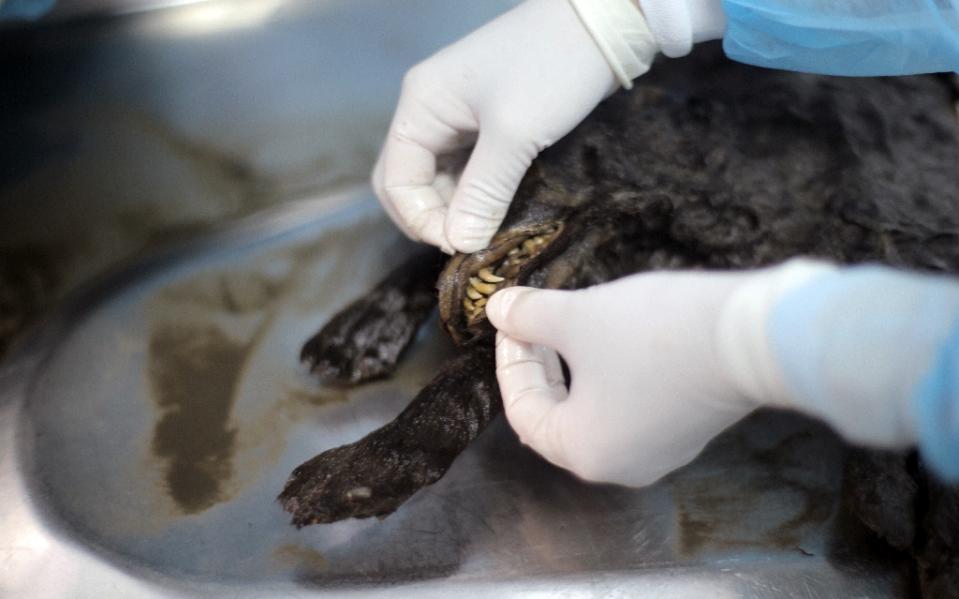What Are Exoplanets And How NASA Detects Life Beyond Our Solar System
Bharti Airtel Set To Acquire Telenor India Within This Year
Google Celebrates NASA’s Discovery Of Seven Earth-Like Planets With An Animated Doodle
Some Home Remedies That Might Sound Bizarre But Actually Work Like A Charm
Akshay Kumar Feels He Has Made Enough Money, Now Wants To Focus On Content & Characters
Delhi ATM Dispenses Fake Rs 2000 Notes From ‘Childrens Bank of India’ With ‘Churan Lable’
Adolf Hitler’s Personal Telephone During World War II Is Up For Auction In The US
From Salman Khan To Rekha, Neil Nitin Mukesh’s Wedding Reception Was Quite A Starry Affair
These 12,460-Year-Old Ice Age Puppies From Russia Could Reveal A Lot About Mankind
The hunters searching for mammoth tusks were drawn to the steep riverbank by a deposit of ancient bones. To their astonishment, they discovered an Ice Age puppy's snout peeking out from the permafrost. A never before event in history Five years later, a pair of puppies perfectly preserved in Russia's far northeast region of Yakutia and dating back 12,460 years has mobilised scientists across the world. "To find a carnivorous mammal intact with skin, fur and internal organs -- this has never happened before in history," said Sergei Fyodorov, head of exhibitions at the Mammoth Museum of the North-Eastern Federal University in the regional capital of Yakutsk. And the discovery could contribute to the lively scientific debate over the origin of domesticated dogs.
It is still unclear whether dogs were domesticated in one place or in several places independently, and whether the process started when humans took in cubs or whether wolves themselves gradually drifted to human sites in search of food.
Whatever their precise lineage, the Tumat pups will keep Fyodorov and other scientists busy for some time.
Grass-eating dogs?
The second puppy's preserved brain will be compared with that of modern dogs and wolves. Parasites found on its body will be analysed, as will the contents of its stomach, which Fyodorov is particularly excited about.
"When we opened it, we were very surprised. The second puppy's stomach is mostly full of twigs and grass," he said, wondering if perhaps the animals were not exclusively carnivorous or whether they started eating grass after they were trapped by a mudslide and began to starve.
"This material is really exceptional and unique," said Mietje Germonpre, a palaeontologist from the Royal Belgian Institute who partnered up with Fyodorov on the project and came to Yakutsk to oversee the autopsy of the second puppy earlier this month.
"The fact that soft tissue is preserved will give much more information compared to information that can be obtained from 'normal' fossils," she said, meaning bones and teeth.
"This material is really exceptional and unique," said Mietje Germonpre, a palaeontologist from the Royal Belgian Institute who partnered up with Fyodorov on the project and came to Yakutsk to oversee the autopsy of the second puppy earlier this month.
"The fact that soft tissue is preserved will give much more information compared to information that can be obtained from 'normal' fossils," she said, meaning bones and teeth.
Permafrost secrets
Fyodorov lamented the long time it takes to get ancient biological material to suitable labs due to financial constraints, the rugged terrain and red tape which sometimes means that samples reach laboratories only six months later.
"Everyone understands that the tissue of mammoth fauna loses its structure with every passing second, even in the freezer," he said.
Yakutia's melting permafrost is likely to yield up even more treasures in the coming years, he added, saying the number of reported prehistoric finds has grown "several fold" in the last decade. Warm and wet weather and flash floods have been a big contributor to the thaw, he said. "Right now it's 0 degrees (Celsius) here. That should not be the case in March."
As better transport and technology becomes affordable, he said, locals are embarking on expeditions to more and more remote corners of Siberia to look for the precious and lucrative mammoth tusks, which can sell for tens of thousands of dollars and are increasingly prized by Chinese carvers given trade bans on elephant ivory.
In Russia, indigenous tribes are allowed to hunt for ancient remains on their ancestral lands. "Our land is locked in by permafrost, but little by little it is revealing its secrets," Fyodorov said.





